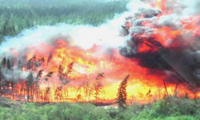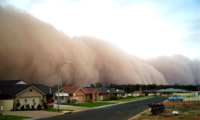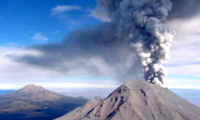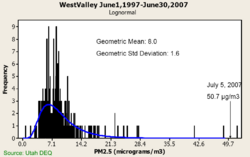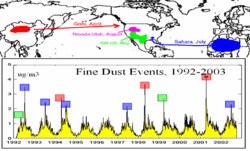Difference between revisions of "Evidence for Flagging Exceptional Events"
| Line 17: | Line 17: | ||
| − | === | + | === 2. Not Reasonably Controllable or Preventable === |
This line of evidence needs to establish that the event is 'not reasonably controllable or preventable'. The EE Rule identifes different [[EPA_Example_EE_Categories| categories of uncontrollable]] events: | This line of evidence needs to establish that the event is 'not reasonably controllable or preventable'. The EE Rule identifes different [[EPA_Example_EE_Categories| categories of uncontrollable]] events: | ||
* Exceedances Due to Transported Pollution (Transported African, Asian Dust; Smoke from Mexican fires; Smoke & Dust from Mining, Agricultural Emissions) | * Exceedances Due to Transported Pollution (Transported African, Asian Dust; Smoke from Mexican fires; Smoke & Dust from Mining, Agricultural Emissions) | ||
| Line 26: | Line 26: | ||
[[image:ForestSmokePic.png|200px]] [[image:DustFrontPic.png|200px]] [[image:Volcano.png|200px]] [[image:July4th_04_S.png|200px]] | [[image:ForestSmokePic.png|200px]] [[image:DustFrontPic.png|200px]] [[image:Volcano.png|200px]] [[image:July4th_04_S.png|200px]] | ||
| − | === | + | === 3. The Exceedance or Violation would not Occur, ''But For'' the Exceptional Event === |
According to the EE Rule, observationas can be EE-flagged if the vioaltion is caused by the exceptional event. | According to the EE Rule, observationas can be EE-flagged if the vioaltion is caused by the exceptional event. | ||
* The leftmost figure shows a case when the 'exceptional' concetration raises the level above the standard. A valid EE to be flagged. | * The leftmost figure shows a case when the 'exceptional' concetration raises the level above the standard. A valid EE to be flagged. | ||
| Line 37: | Line 37: | ||
Illustration Exceptional Events, EE and non-EE events by the EE Rule. | Illustration Exceptional Events, EE and non-EE events by the EE Rule. | ||
| − | === | + | ===4. The Event is in excess of the Historical Values === |
[[Image:PMDistributionFunction.png|250px]][[Image:NAMDustEvents.png|250px]] | [[Image:PMDistributionFunction.png|250px]][[Image:NAMDustEvents.png|250px]] | ||
| − | === | + | === 5. Clear Causal Relationship between the Data and the Event === |
There are multiple lines of evidence that can support the relationship between observations and the event. In the Exploratory Study the following lines of evidence were suggested: | There are multiple lines of evidence that can support the relationship between observations and the event. In the Exploratory Study the following lines of evidence were suggested: | ||
Revision as of 12:44, April 9, 2008
< Back to Exceptional Event Workspace
What Evidence is Required to Flag an Exceptional Event? (EE)
The Exceptional Events Rule requires states that flag data to satisfy the requirements of 40 CFR 50.14 (c)(3)(iii) to provide evidence that:
- The sample is a likely exceedance
- The event satisfies the criteria that it was not reasonably controllable or preventable
- There would have been no exceedances or violation but for the event.
- The event is associated with a measured value in excess of historical values.
- There is a clear casual relationship between the measured value and the event
1. Is there a likely exceedance?
Exceptional events flags are appropriate for samples that are likely to cause an exceedance. For PM2.5, noncompliance is defined as: 985%-tile over 35 ug/m3.
2. Not Reasonably Controllable or Preventable
This line of evidence needs to establish that the event is 'not reasonably controllable or preventable'. The EE Rule identifes different categories of uncontrollable events:
- Exceedances Due to Transported Pollution (Transported African, Asian Dust; Smoke from Mexican fires; Smoke & Dust from Mining, Agricultural Emissions)
- Natural Events (Nat. Disasters.; High Wind Events; Wildland Fires; Stratospheric Ozone; Prescribed Fires)
- Chemical Spills and Industrial Accidents; Structural Fires; Terrorist Attack
3. The Exceedance or Violation would not Occur, But For the Exceptional Event
According to the EE Rule, observationas can be EE-flagged if the vioaltion is caused by the exceptional event.
- The leftmost figure shows a case when the 'exceptional' concetration raises the level above the standard. A valid EE to be flagged.
- In the next case, the concentration from controllable sources is sufficient to cause the exceedance. This is not a 'but for' case and should not be flagged.
- In the third case, there is no exceedance. Hence, there is no justification for an EE flag.
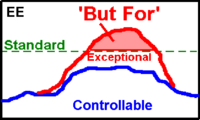
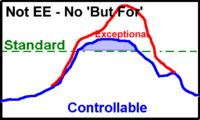
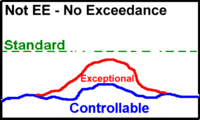
Illustration Exceptional Events, EE and non-EE events by the EE Rule.
4. The Event is in excess of the Historical Values
5. Clear Causal Relationship between the Data and the Event
There are multiple lines of evidence that can support the relationship between observations and the event. In the Exploratory Study the following lines of evidence were suggested:
- Chemical Signature
- Observed Pollutant Source and Transport
- Spatial Pattern of Pollutant
- Temporal Pattern of Pollutant
However, additional lines of evidence should be considered and illusterated. Community participation would be most desirable.
